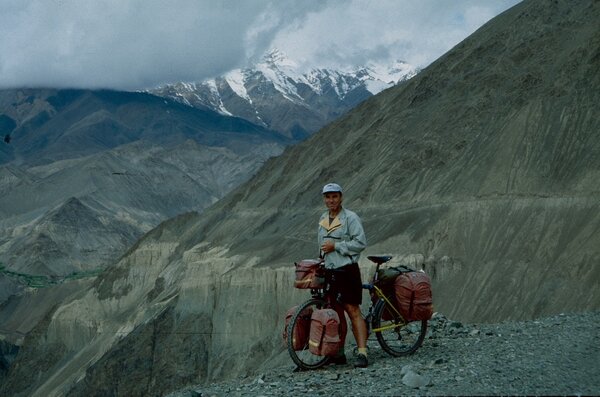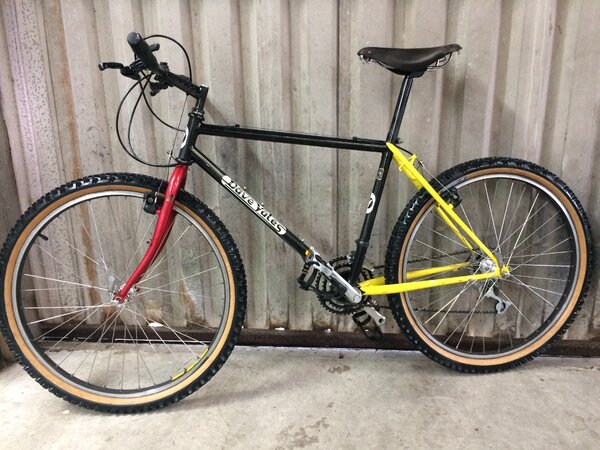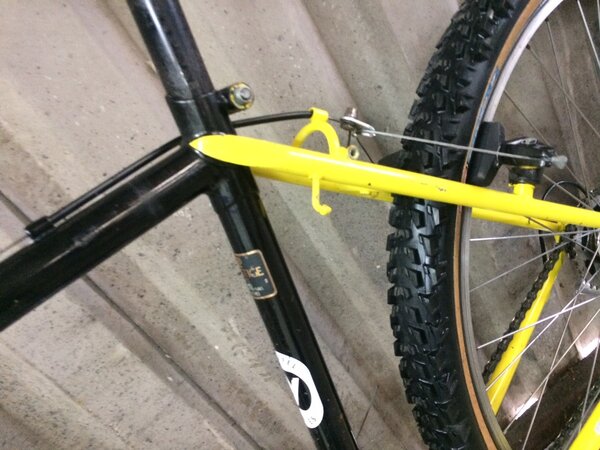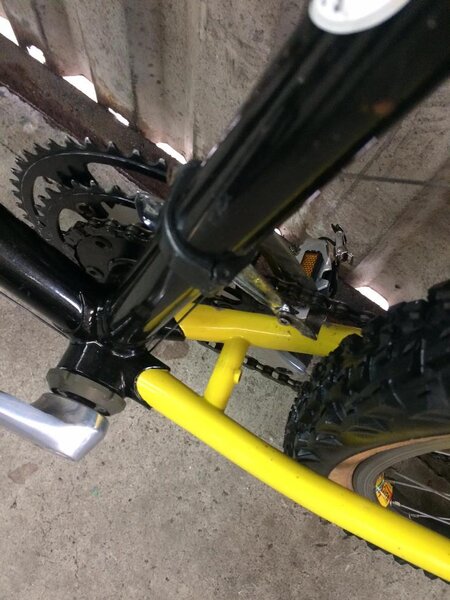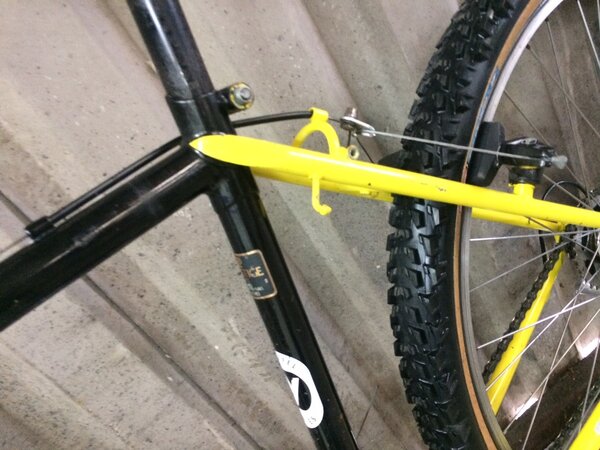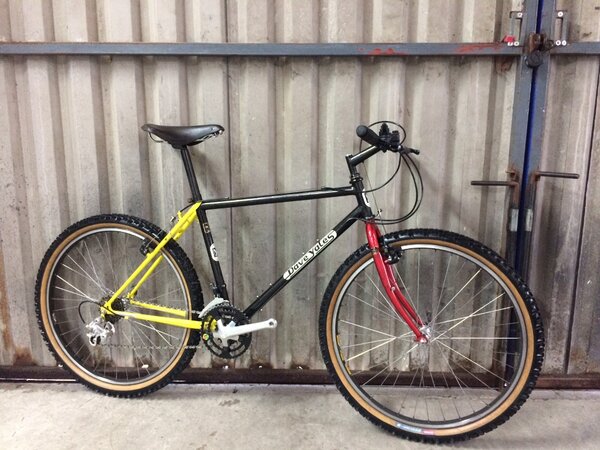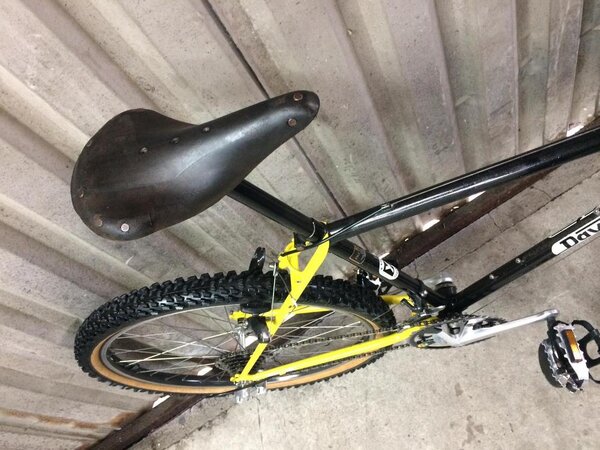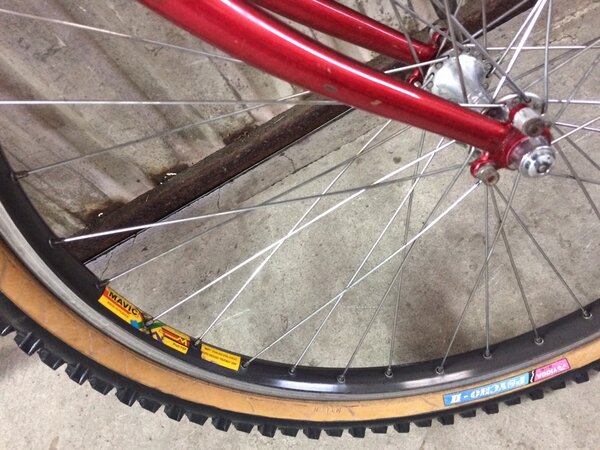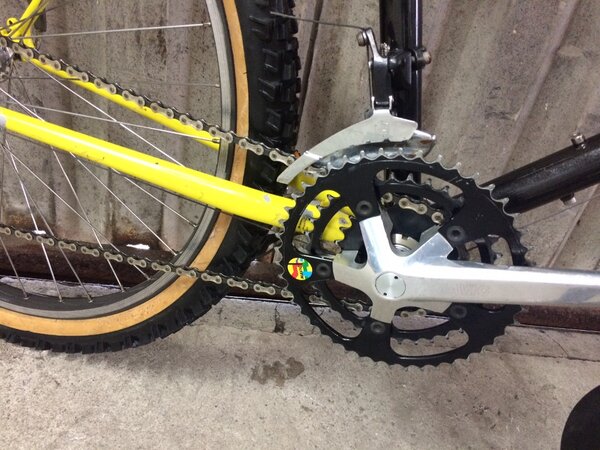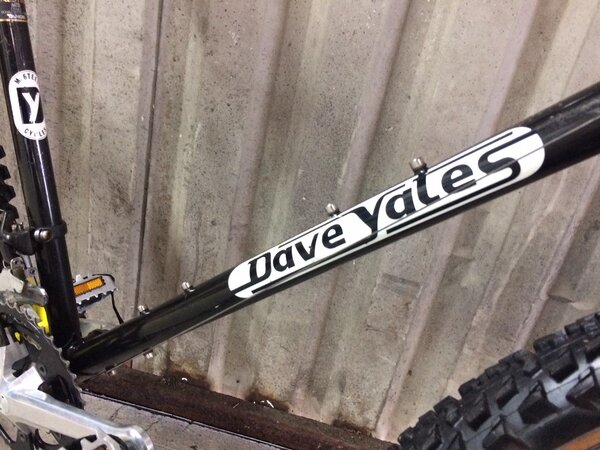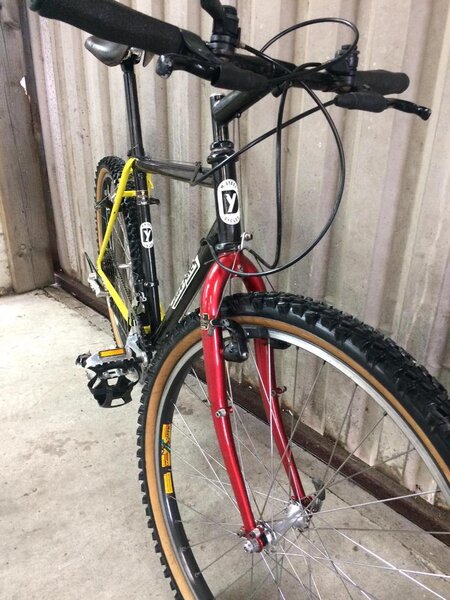A little over a year ago a bike came up for sale that was destined to be stripped for parts. Quite simply the sum of the parts seemed to out way the value placed on the whole bike, it looked tired, the description wasn't the best and nor were the pictures.
With some help from my father to collect and a real nice guy selling it, a deal was struck.
When the bike arrived it was clear it had been used, and used a whole Lot, the brief description mentioned it was built for expedition by Dave Yates, But untill the bike arrived i didn't really take that on board.
I had to talk to the seller, to get the full story, and wow was i impressed, the bike was built by Dave Yates with a simple task to fulfill, Adventure, to go everywhere, and anywhere the fancy took, and to remain reliable.
And it did just that, for the next 27+ years, every chance that came up the bike was used to Explore.....
Below is a small amount of detail from the original owner of the whys and wherefores of the build, its use and its Global adventures......
Hi Carl,
Some brief info about the spec/ components.
I had the bike custom built by Dave Yates in 1990 specifically for long distance touring, and the need to be able to carry heavy loads and maximize the amount of water bottles. Prior to that I was touring on a Claude Butler Dalesman road bike, ( which I still have and use!) however I was using it to travel across the interior of Iceland or to North Cape in Arctic Norway, and thought I needed something better suited for a longer more rugged trips, and decided to get a custom built bike. In discussion with Dave, we agreed on more relaxed frame angles to regular mountain bikes to maximize stability on long descents while laden with panniers, but not so relaxed that the bike became sluggish on the level or ascents. The choice of components was based on what was available at the time that could be easily maintained or replaced, hence the campagnolo gears, which it was possible to strip down and rebuild if problems occurred. Similarly, with the standard freewheel. Cassette hubs were becoming common at the time, but were rejected, as their ability to withstand constant hard touring was largely untested. If a cassette hub had ceased to work in India, replacing it would have been impossible, whereas a standard hub could be replaced anywhere in the third world. Even if it had fewer sprockets, I'd still be able to replace and be mobile again, which was the important thing. It was the same with pannier racks. Dave made me some custom rigid, strengthened steel racks with extra fittings to allow two water bottles to be carried on the back ones. I was advised by other cyclists to reduce weight and go for aluminum racks and lightweight components, which didn't make sense to me. Travelling with so much gear, clothes, waterproof, tent camping stove, sleeping bags, camera equipment was so heavy anyway that the savings were pointless. I needed stuff that could stand heavy use, poor maintenance and was long lasting, and fitted accordingly. The wisdom of this was shown when a steel rack fractured at a joint in India, and we were able to find someone to weld it back together, in a small village, for pennies, fixed in minutes - and the rack is still going strong on my wife's bike 25 years later! In contrast, we met some German cyclists with super lightweight racks that had broken and were held together with wire and string because they couldn't find anyone to repair them. For round the world travel, I wasn't interested in what was new, stylish and flashy. I chose on ease of use, ease of maintenance, easy to replace, easy to repair or tried and trusted components that by then had a history of decades of hard use. The only new thing on that bike is the cheap pedals, as the pedals took quite a hammering, and the bearing were shot. The wheel hubs and bottom bracket are original, so I could re -grease or replace bearings on the road, - again sealed hubs would have been utterly useless in India, if they'd failed! Keep it simple and keep it basic, get stuff that works and does the job.
Some of the places the bike has been to.
UK
Most of Europe
Scandinavia
Canada
America
Fiji
New Zealand
Malaysia
Singapore
Indonesia
Borneo
Sumatra
India/Ladakh
I'll find some photos to send separately.
Cheers,
Walter.
With some help from my father to collect and a real nice guy selling it, a deal was struck.
When the bike arrived it was clear it had been used, and used a whole Lot, the brief description mentioned it was built for expedition by Dave Yates, But untill the bike arrived i didn't really take that on board.
I had to talk to the seller, to get the full story, and wow was i impressed, the bike was built by Dave Yates with a simple task to fulfill, Adventure, to go everywhere, and anywhere the fancy took, and to remain reliable.
And it did just that, for the next 27+ years, every chance that came up the bike was used to Explore.....
Below is a small amount of detail from the original owner of the whys and wherefores of the build, its use and its Global adventures......
Hi Carl,
Some brief info about the spec/ components.
I had the bike custom built by Dave Yates in 1990 specifically for long distance touring, and the need to be able to carry heavy loads and maximize the amount of water bottles. Prior to that I was touring on a Claude Butler Dalesman road bike, ( which I still have and use!) however I was using it to travel across the interior of Iceland or to North Cape in Arctic Norway, and thought I needed something better suited for a longer more rugged trips, and decided to get a custom built bike. In discussion with Dave, we agreed on more relaxed frame angles to regular mountain bikes to maximize stability on long descents while laden with panniers, but not so relaxed that the bike became sluggish on the level or ascents. The choice of components was based on what was available at the time that could be easily maintained or replaced, hence the campagnolo gears, which it was possible to strip down and rebuild if problems occurred. Similarly, with the standard freewheel. Cassette hubs were becoming common at the time, but were rejected, as their ability to withstand constant hard touring was largely untested. If a cassette hub had ceased to work in India, replacing it would have been impossible, whereas a standard hub could be replaced anywhere in the third world. Even if it had fewer sprockets, I'd still be able to replace and be mobile again, which was the important thing. It was the same with pannier racks. Dave made me some custom rigid, strengthened steel racks with extra fittings to allow two water bottles to be carried on the back ones. I was advised by other cyclists to reduce weight and go for aluminum racks and lightweight components, which didn't make sense to me. Travelling with so much gear, clothes, waterproof, tent camping stove, sleeping bags, camera equipment was so heavy anyway that the savings were pointless. I needed stuff that could stand heavy use, poor maintenance and was long lasting, and fitted accordingly. The wisdom of this was shown when a steel rack fractured at a joint in India, and we were able to find someone to weld it back together, in a small village, for pennies, fixed in minutes - and the rack is still going strong on my wife's bike 25 years later! In contrast, we met some German cyclists with super lightweight racks that had broken and were held together with wire and string because they couldn't find anyone to repair them. For round the world travel, I wasn't interested in what was new, stylish and flashy. I chose on ease of use, ease of maintenance, easy to replace, easy to repair or tried and trusted components that by then had a history of decades of hard use. The only new thing on that bike is the cheap pedals, as the pedals took quite a hammering, and the bearing were shot. The wheel hubs and bottom bracket are original, so I could re -grease or replace bearings on the road, - again sealed hubs would have been utterly useless in India, if they'd failed! Keep it simple and keep it basic, get stuff that works and does the job.
Some of the places the bike has been to.
UK
Most of Europe
Scandinavia
Canada
America
Fiji
New Zealand
Malaysia
Singapore
Indonesia
Borneo
Sumatra
India/Ladakh
I'll find some photos to send separately.
Cheers,
Walter.
